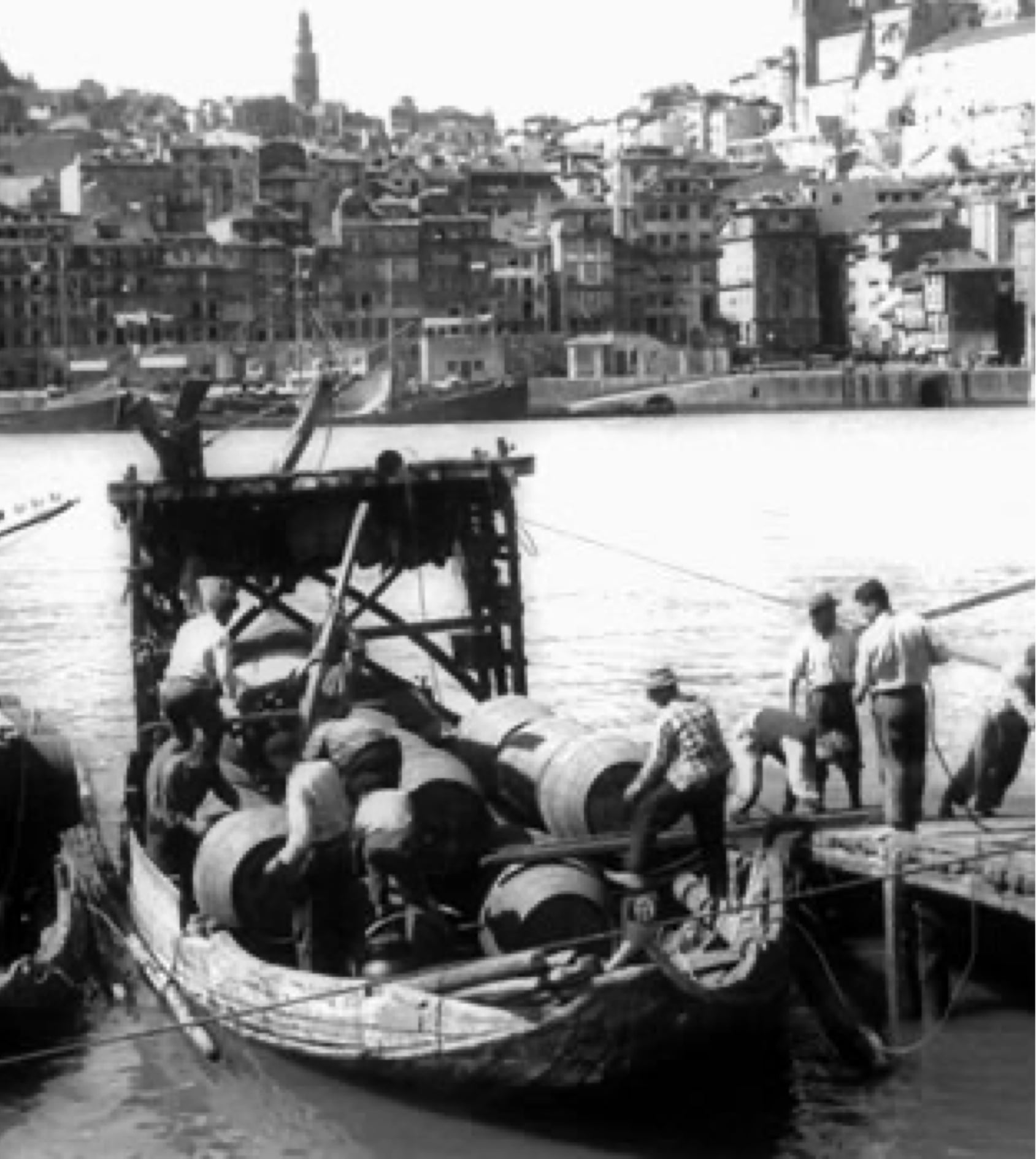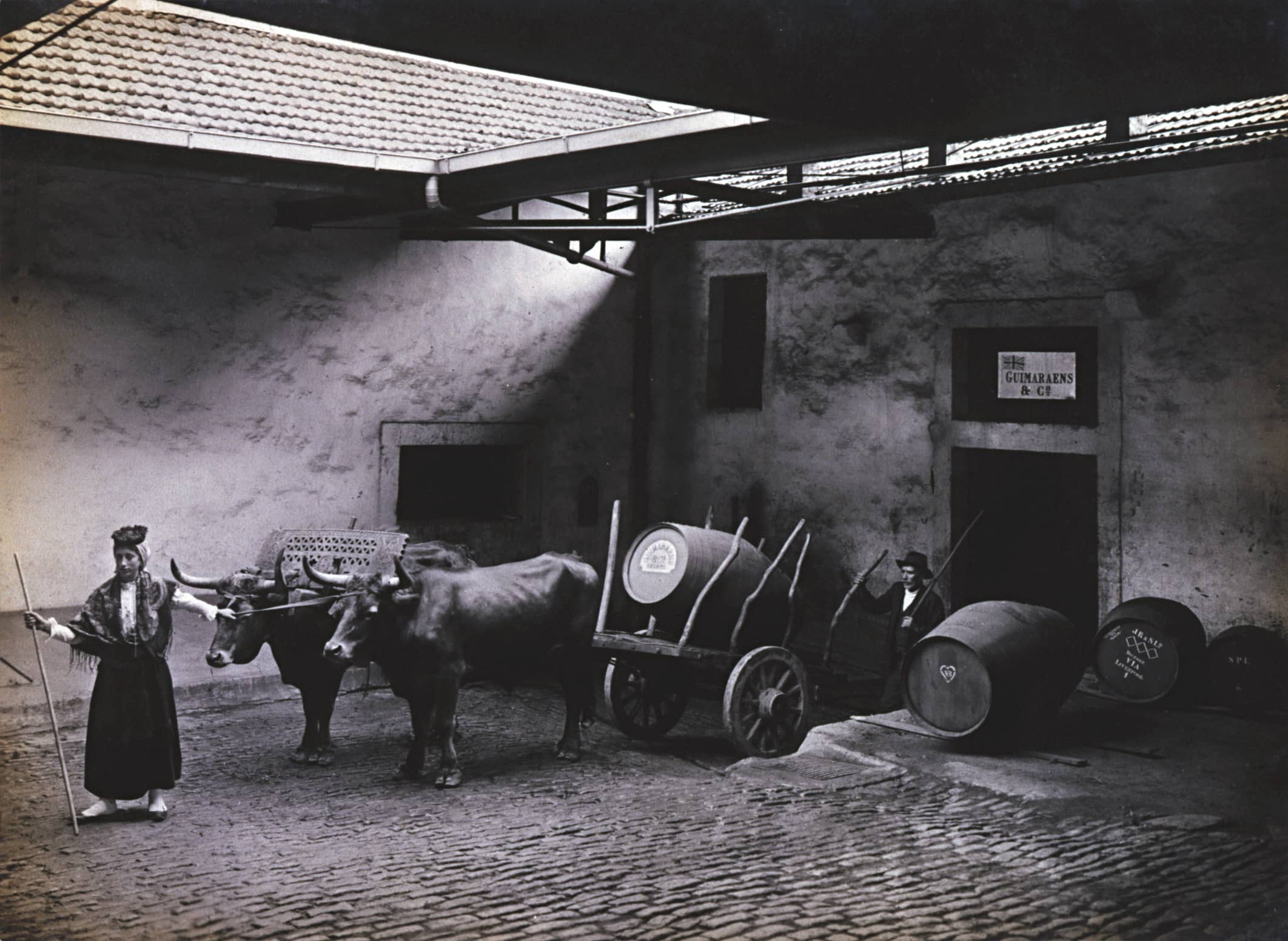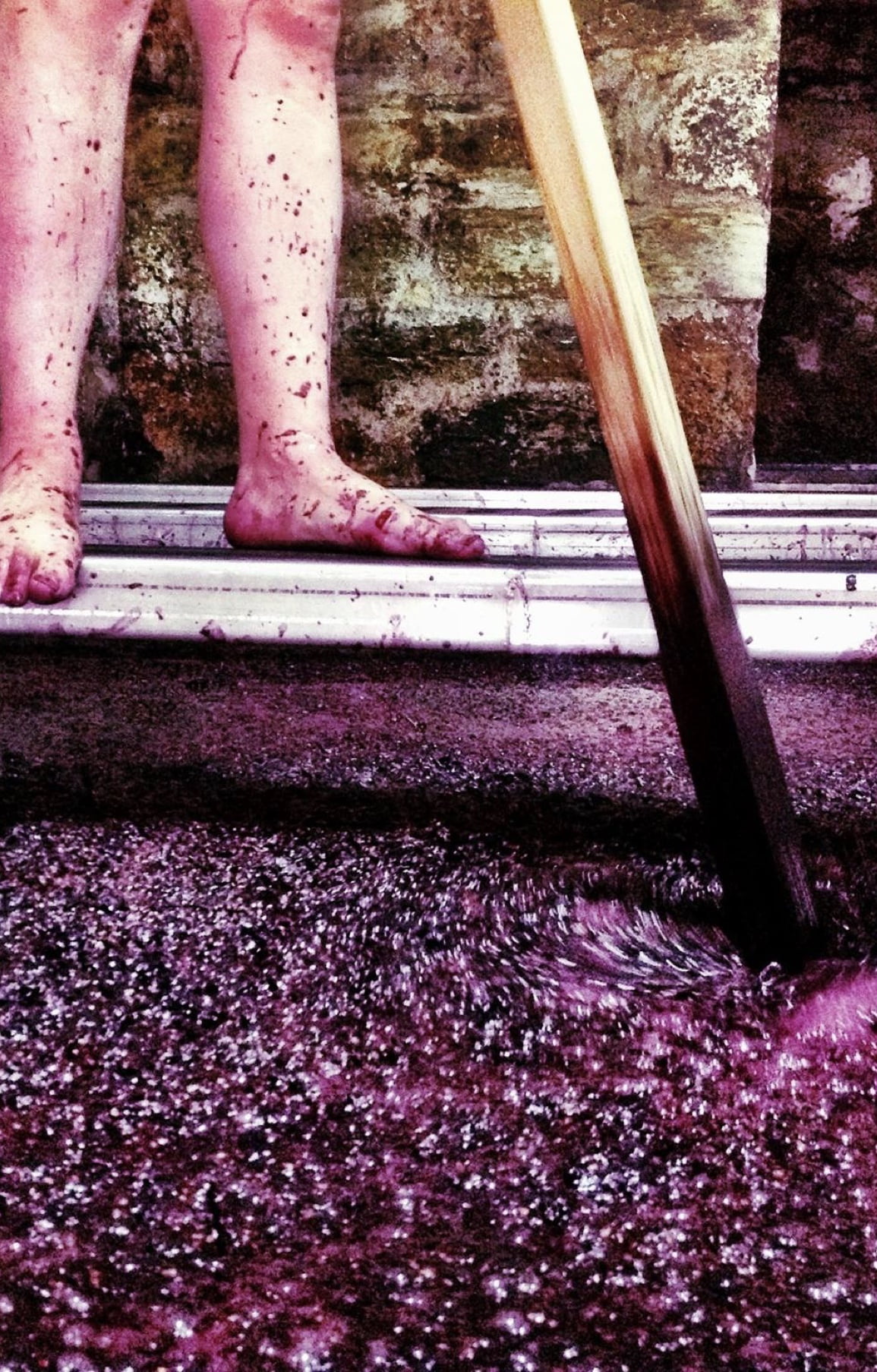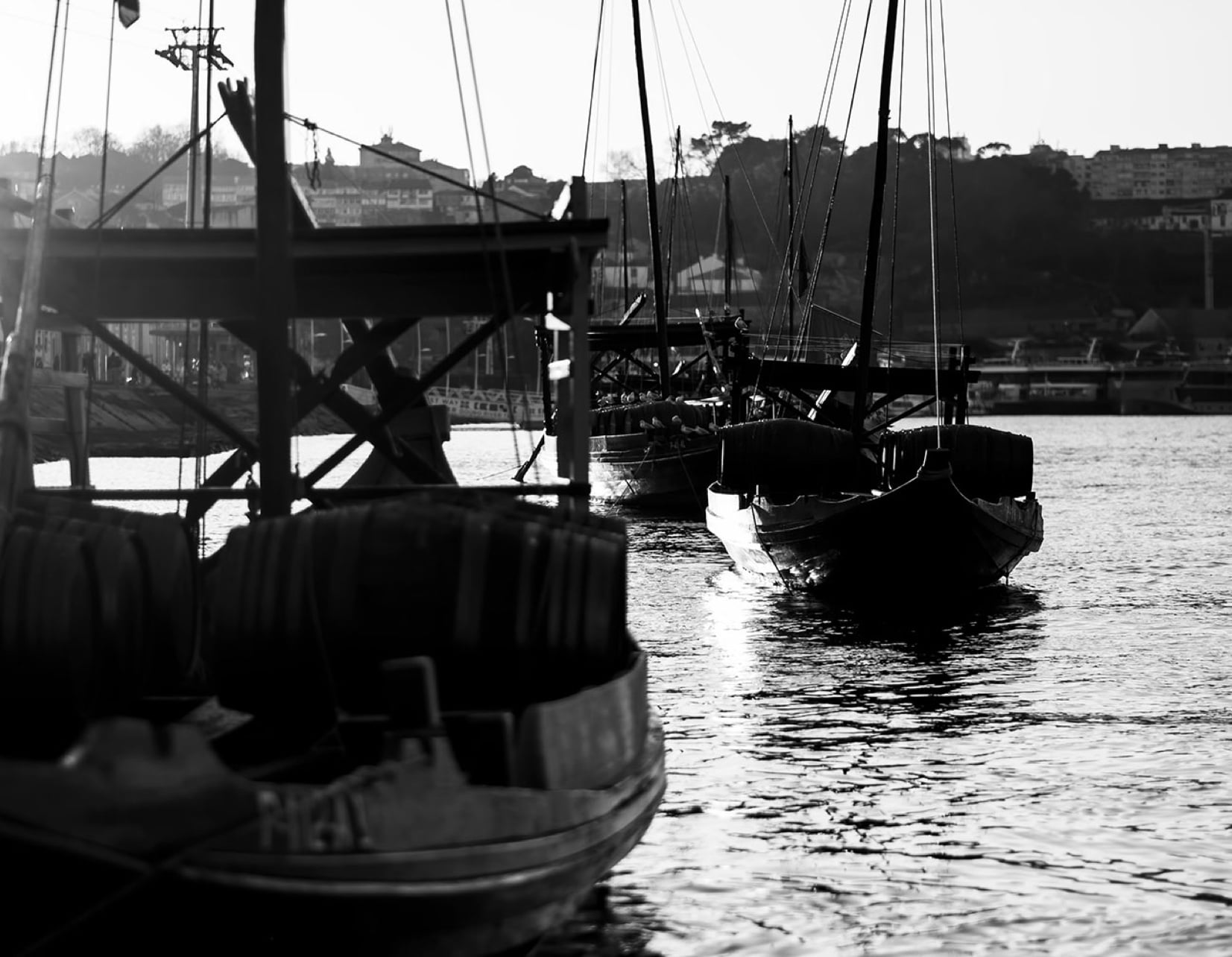In 1791 the eastern reaches of the Douro River were opened to navigation when the massive outcrops of rock obstructing the Valeira Gorge were finally removed. This made it economically viable to plant vineyards in the eastern area of the Douro Valley which became known as the Douro Novo, or 'New Douro', and later as the Douro Superior. In the years that followed many new estates were established in this area, including some famous properties whose magnificent wines did much to enhance the prestige of Port.
Throughout the 18th and 19th centuries, and until well into the 20th, the task of transporting the new wines down the river to the 'lodges' of the Port shippers in Vila Nova de Gaia fell to the 'barcos rabelos'. These remarkable flat-bottomed river boats, with their distinctive long steering oars and broad sails, were designed to carry heavy loads of Port casks through the lethal rapids, treacherous shoals and narrow gorges of the fast-running Douro.
It was in the second half of the 18th century that the technique of fortification as practiced today gradually became widespread. In the early days of the Port trade, it was common practice to add a small amount of brandy to the wine prior to shipment to preserve it from spoiling. However in the late 1700s it became increasingly common to add some brandy - essentially a young, clear neutral spirit distilled from wine - during the fermentation, arresting it before all the natural sweetness of the grape juice was converted into alcohol. This ensured that the wine never spoiled and, more importantly, created a wine whose sweetness, strength and richness of flavour was very much to the taste of the consumer in England and elsewhere. Although it was not until around 1850 that this method of fortification became universally adopted as an essential part of the process of making Port, by the end of the 18th century the practice had become well established.
The late 1700s also witnessed another pivotal development, namely a gradual change in the shape of the glass bottle. From being broad based, onion shaped and intended to be re-used, bottles became progressively taller, more cylindrical and cheaper to produce. By the 1770s their shape allowed them to be stored on their sides and used for the long term ageing of wine. The adoption of fortification, which increased the Port's ability to age, combined with the development of the cylindrical bottle led to the emergence of the most noble of all Port styles, Vintage Port. It is thought that the first Vintage Port was made in 1775.
The early nineteenth century was marked by conflict and Port shipments were affected in turn by the Napoleon's peninsular campaigns and the civil war between the supporters of the liberal and absolutist pretenders to the Portuguese throne. However the return of peace in the 1830s ushered in a golden age for Port producers. The appreciation of Port began to extend beyond its traditional markets of Britain and Brazil. Countries such as Russia, Germany, Holland, Scandinavia and the United States also began to take an interest in the magnificent wines of the Douro Valley.
As the century progressed, Vintage Port consolidated its prestige as a great wine at least as respected and desired as the other famous wines of Europe. With the launch of the 1840 Vintage, Fonseca began to establish a reputation for the quality of its Vintage Ports. The custom of releasing Vintage Ports only in the best years, in other words of 'declaring' only the finest vintages, emerged at this time as did the taste for wines that had aged for some time in the cellar.
The 1860s and 70s brought disaster to the Douro Valley in the form of Phylloxera, the deadly American vine louse that had already laid waste to many of the vineyards of France by attacking and destroying the roots of the vines. It is thought that Phylloxera arrived in the Douro in 1868. In any event, by the early 1870s it had destroyed many of the valley's finest vineyards. Phylloxera was finally brought under control by grafting the Portuguese vine varieties onto the resistant roots of native American vines but in the meantime yields had dropped dramatically and many vineyard owners had been financially ruined. The vestiges of old terraces which were never replanted after Phylloxera can still be seen in many parts of the valley.
In the 1880s the Port trade began to recover and vineyard owners set to rebuilding and replanting the blighted vineyards, often introducing new techniques and grape varieties. By the final years of the century, Port was thriving once again and enjoyed a healthy level of consumption until the 1920s. Many of the customs and rituals surrounding Vintage Port, which had acquired a mystique enjoyed by only the most prestigious wines, originated during this period. New markets began to develop in the Low Countries and Scandinavia and in a climate of prosperity many houses Port houses invested heavily in their flagship estates to ensure the quality and continuity of style of their Vintage Ports.
In 1933 the Instituto do Vinho do Porto (IVP), or Port Wine Institute, was created by the Portuguese Government to regulate the production and sale of port and a complex and sophisticated method of classifying the Port vineyards and controlling the quantity and quality of their production was introduced.
During World War II Port sales fell sharply but the last decades of the 20th century saw a return to growth. This was an era of innovation in the Port trade. New products and wine styles were developed, such as Fonseca's celebrated reserve blend, Bin No.27. Port consumption became more widespread geographically with the United States and Canada in particular developing as key markets for quality Port in the final years of the century. Investment by the Port houses in their vineyards encouraged the emergence of new methods of vinification and vineyard landscaping as well as further research into the behavior and characteristics of the traditional Port grape varieties. As the century drew to a close many vineyards were converted to 'vinha ao alto', or planting in rows running vertically up the hillsides, a technique with many quality and environmental benefits.
The first years of the 21st century have witnessed continuing investment in the vineyard, with sustainability, both economic and environmental, becoming an increasingly important priority as producers seek to preserve the unique heritage and environment of the Douro Valley for future generations.






















